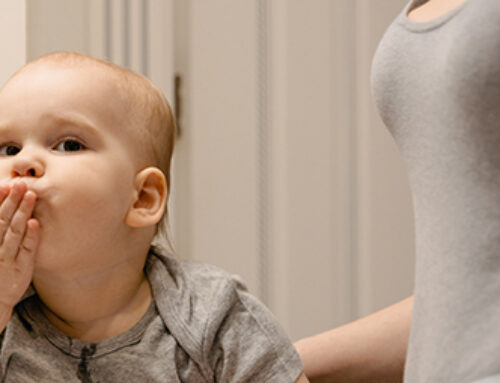A neighborhood walk or scavenger hunt is a wonderful opportunity to target expressive and receptive language skills.
Identification and labeling:
A walk outside with your little one is a great time to work on identifying and labeling things we see in the world around us. Start by modeling this skill by saying “Car!” or “I see a car!” for little ones who are still growing their vocabulary repertoire. This can be expanded to “I see a big, red car” if your child is building their descriptive words. Encourage your child to talk about the world around them as you model. Practice pointing at objects and see if your child can point to the same object you are describing. Ask your child questions to work on the identification of objects such as “Where is the dog?” or “Where is the little pink flower?”
Imitation skills:
Draw your child’s attention to environmental sounds such as car horns, chirping birds, or construction sounds. Imitate them together and have fun using your voice and making silly sounds!
Early literacy skills:
Go on an alphabet scavenger hunt and look for all 26 letters! Or pick a letter of the day and see where you can find it while on a neighborhood walk. This is a great time to work on simple sight words with older children.
Neighborhood scavenger hunt:
Use one of the Neighborhood Scavenger hunt printables below to guide your neighborhood walk.
Like all of our daily routines and activities, a neighborhood walk is a great opportunity to target valuable speech and communication skills. Enjoy the fresh air and bonding time with your little one!



Blue Bird Day fosters socialization, sensory regulation, and pre-academic learning in children ages 2-7 years in therapeutic rotations that simulate preschool and kindergarten settings. Our compassionate therapists practice a relationship-based and family-centered approach, provide parent training, and collaborate on goals and individualized intensive treatment plans for your child.
We believe in a collaborative and multi-disciplinary team approach to therapy. A team of occupational therapists, speech-language pathologists, dietitians, developmental therapists, behavioral therapists, physical therapists, and therapeutic assistants are created for each child to ensure child and family are fully supported and the best possible results are achieved.
Options for individualized, group and virtual therapy sessions are available as well.
Want to learn more or you have a specific question? Feel free to connect with us here!



